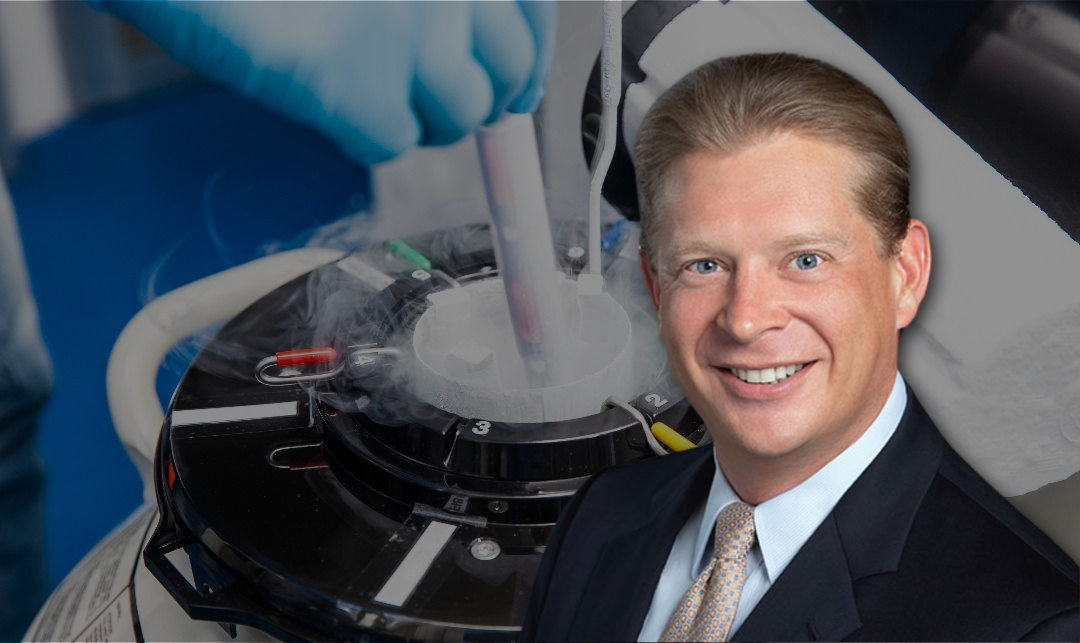Cryonics research focuses on halting biological time by stopping cellular death after pronouncement of legal death. This is achieved by lowering the body’s temperature to an extreme degree and holding it in stasis at that point. Think of cryonics as an extension of emergency medicine: It takes over when today’s medicine cannot save a life. Cryonics is the bridge between pronouncement of legal death and future medical technologies.
Imagine you are in your office in 1955 and you suffer a heart attack. A colleague rushes to your side to find that you have no pulse and are not breathing. You are dead. That pronouncement in 1955 was both right and wrong at the same time.
It was right in that clinical death used to be considered the same as biological death. A few years later, in 1960, CPR was developed to resuscitate people without a heartbeat or respiration. If you suffer a cardiac arrest today, someone may use CPR or a defibrillator to restart your heart, and you may be revived. You can be clinically dead for a significant period of time, but we now understand that clinical death does not definitively lead to biological death.
Today, doctors declare legal death when they cannot resuscitate a patient with current medical technologies—or if the patient does not want to be resuscitated because of terminal illness. But what if people considered dead by today’s criteria could be revived by means that have yet to be developed? The aim of cryonics is to pause the cellular dying process to buy time for more advanced technology and medical interventions to be developed in the future, allowing people to eventually be brought back to life.
A person declared legally dead today may still be biologically alive. We’ve developed medical technologies to donate organs from legally dead people to save lives because the donated organs are still biologically alive. There are numerous cases of people who have been clinically dead for many minutes, some up to an hour or more, who are revived and survive. This may happen when someone falls into very cold water—which slows down metabolism—or when surgeons have a patient on external metabolic support.
A fundamental principle of cryonics is that metabolism, and therefore the dying process, slows down as temperature falls. Today, surgeons cool patients to give them more time to operate or heal. Each reduction of 10°C slows metabolism down by 50%, known as the Q10 rule. Thus, reducing someone’s temperature from 37°C to 7°C (98.6°F to 44.6°F) slows their metabolism by 87.5%. In cryonics research, patients are maintained at -196°C (-320.8°F) and metabolism stops. Decades or even centuries may pass, and a cryopreserved person will be unchanged biologically, even as the rest of the world continues on. Future medical innovations far more advanced than today’s CPR or defibrillation, such as gene therapy or nanotechnologies, may be developed to treat and cure ailments that result in certain death today.
While no one has been revived from cryopreservation yet, we currently cryopreserve and successfully rewarm and transplant skin, corneas, heart valves, vasculature, eggs, sperm, and even embryos. Science is on the verge of reversibly cryopreserving human organs to increase the survival rate of people who need an organ transplant. Reversing cryopreservation for large organs or people is not feasible today, but research into these medical technologies is ongoing and advancements are happening all the time. While medical technology continues to move forward, cryonics stops biological time to allow those advancements to be realized—and there’s reason to believe it could happen soon.
Here’s how cryopreservation works:
Phase 1: Standby, Stabilization, and Transport
Under ideal circumstances, the cryonics research team is bedside and starts procedures quickly after legal death is pronounced. These procedures include cooling the legally deceased but biologically viable patient while using a mechanical CPR device and ventilating to restart circulation and respiration as a series of medications to protect the cells from injury are administered. Then the patient is quickly transported to a cryonics facility by vehicle or plane.
Phase 2: Vitrification
A surgeon accesses the patient’s vascular system and connects it to a computer-controlled pump and chiller. Blood and intracellular fluids are removed and replaced with a cryoprotectant that allows the temperature to be reduced with less ice formation. Although the cryonics process is colloquially referred to as “freezing,” today cryonics aims to vitrify the body, or bring it to a glass state. Vitrification avoids the damage caused by jagged ice crystals and preserves cellular structure.
Phase 3: Storage
The final phase involves cooling the patient to -320°F, stopping metabolism, and storing the patient in liquid nitrogen in a cryogenic dewar, an industrial-sized, vacuum-insulated steel container, functionally like a very large and expensive Thermos flask. Temperature is maintained without electricity by periodically adding additional liquid nitrogen to the dewar. The first cryonics patient, Dr. James Bedford, has been maintained for 54 years and continues to be entrusted to the Alcor’s care.
No one can accurately predict the future, and while we cannot be certain cryonics patients will one day be repaired, revived, and restored to better health, cryonics research is an important step in the advancement of medicine. Cryonics is not in conflict with the laws of physics or biology, which is critical to its viability. Advancing science and innovation to a point where cryonics becomes a universal lifesaving medical practice requires further research and technological progress.
Many of those who have signed up to be part of this research may imagine being alive in a future where, through additional medical advancements, they feel better and are restored to optimal health, allowing them an extended number of years to create, love, produce, and enjoy life.
Cryonics may extend life, but it is not a quest to eliminate death. It is a quest to find answers and a means to provide better medicine and health for all. It is also a testament to the possibilities of science and technology.
About Alcor: Founded in 1972, the Alcor Life Extension Foundation is a nonprofit 501(c)(3) corporation and the world leader in cryonics, cryonics research, and cryonics technology.
Patrick Harris is a healthcare executive, innovator, and business strategist. He has over two decades of experience in the healthcare industry and credits much of his professional growth to his tenures at both McKesson, Inc. and Safeway Corporate Pharmacy.













































